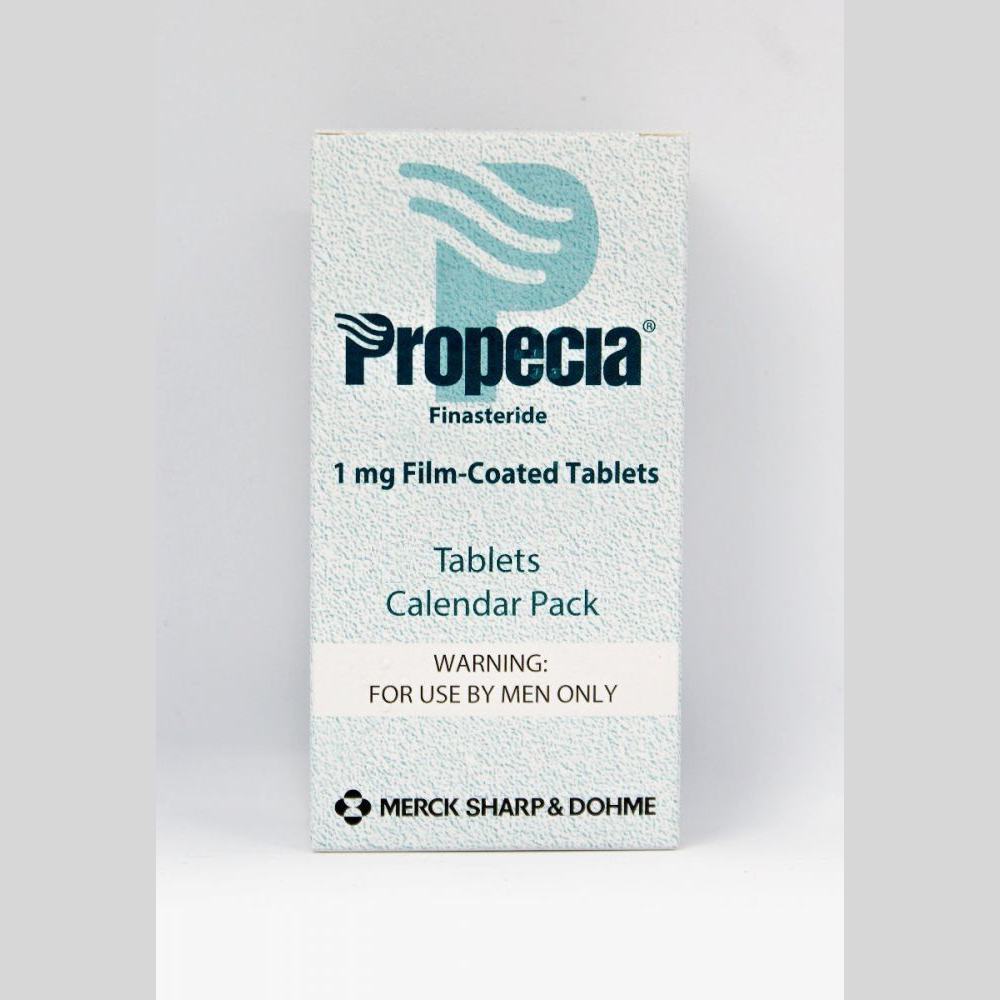Propecia 1 mg
$12.00 $9.00
Propecia 1mg

Description
Propecia, a generic version of Finasteride, is a clinically approved medication for the treatment of hair loss. If you are considering this medication, it is important to understand how it works best, its potential side effects, and other associated information.

What is Propecia and how is it used?
Propecia is a prescription medicine used to treat the symptoms of benign prostatic hyperplasia (BPH), male pattern hair loss (androgenic alopecia). it may be used alone or with other medications.
it belongs to a class of drugs called 5-Alpha-Reductase Inhibitors.
It is not known if it is safe and effective in children.
What are the possible side effects of Propecia?
Propecia may cause serious side effects including:
- breast lumps,
- breast pain or tenderness,
- nipple discharge, and
- any other breast changes
Get medical help right away, if you have any of the symptoms listed above.
The most common side effects of it include:
- loss of interest in sex,
- impotence,
- trouble having an orgasm, and
- abnormal ejaculation
Tell your doctor if you have any side effect that bothers you or that does not go away.
These are not all the possible side effects of Propecia. For more information, ask your doctor or pharmacist.

BENEFITS OF USING PROPECIA:
When combating hair loss and thinning, using tab 1 mg tends to be the most successful approach. it is taken once a day to effectively treat hair loss all over the scalp. It contains Finasteride, which is a proven medication for the treatment of male pattern baldness or androgenetic alopecia. Male pattern baldness is the commonly reported hair loss problem in men. A majority of men having this problem will begin losing their hair in their teenage.
By the age of 60, around 80% of males experience some degree of this pattern hair loss. Men with pattern hair loss tend to lose in a well-defined pattern beginning from the temples and then progresses over time to form a typical M shape. The type of hair loss involves the crown area, gradually advancing until the entire scalp. Gradually the entire scalp area, including the front, top, and crown are bald.
The effects of dihydrotestosterone (DHT), a male testosterone on genetically susceptible hair follicles present in the top, front, and crown area of the scalp is responsible for causing male pattern hair loss. DHT cause shrinking of hair follicles; it reduces the size of hair follicles (Miniaturization) by both in diameter and length. As a result, the miniaturized follicles begin to produce small unpigmented hair rather than the normal hair. DHT also decreases the growth phase of the hair follicle cycle. These effects cause the hair to become shorter and finer gradually and ultimately disappear.
Here, when the role of Propecia medication comes. Finasteride, the active ingredient in tab blocks 5 alpha-reductase, an enzyme that converts the males testosterone to DHT. This results in a drop in the levels of DHT. According to research studies, Finasteride 1 mg decreases serum DHT levels by 70%.
USES OF PROPECIA:
According to research studies, around 90% of men taking Propecia (finasteride) experienced either growth of new hair or a halt to their hair loss.
A tablet should be taken once daily before or after consuming meals. Patients are instructed to take the medication for one year or longer before its effects have appeared. The hair loss drug is extremely helpful in preventing hair loss and re-growing hairs.
Finasteride takes up to one year to show its full effect. During the first six months of the treatment, being a user, you may notice some thinning of your existing hair. During this period, you require to be patient and continue using it for at least a year before you and your dermatologist can assess its benefits.
/hairloss-GettyImages-1187311419-2000-fe1c0f6cc2624c9a8c105459177ea93a.jpg)
SIDE EFFECTS OF PROPECIA:
COMMON
Breast tenderness
Erectile dysfunction
Breast enlargement
Testicular pain
Rashes
Decreased volume of ejaculation
Decreased libido
If you have any of these side effects, contact your dermatologist and ask for any advice regarding discontinuing the treatment.
Before being prescribed Finasteride drug, you will have a consultation with your dermatologist where the recommended dosage will be discussed. When the medication is taken correctly in an appropriate manner, the possible side effects are quite mild and do not cause you to stop taking medicine.
The medication is generally well tolerated and safe to use. It is necessary to tell your dermatologist if you have any allergies as this product contains many inactive ingredients which could cause you an allergic reaction.
Be the first to review “Propecia 1 mg” Cancel reply
Related products
Hair Loss
Hair Loss
Hair Loss
Hair Loss
Hair Loss
Hair Loss
Hair Loss
Hair Loss












Reviews
There are no reviews yet.